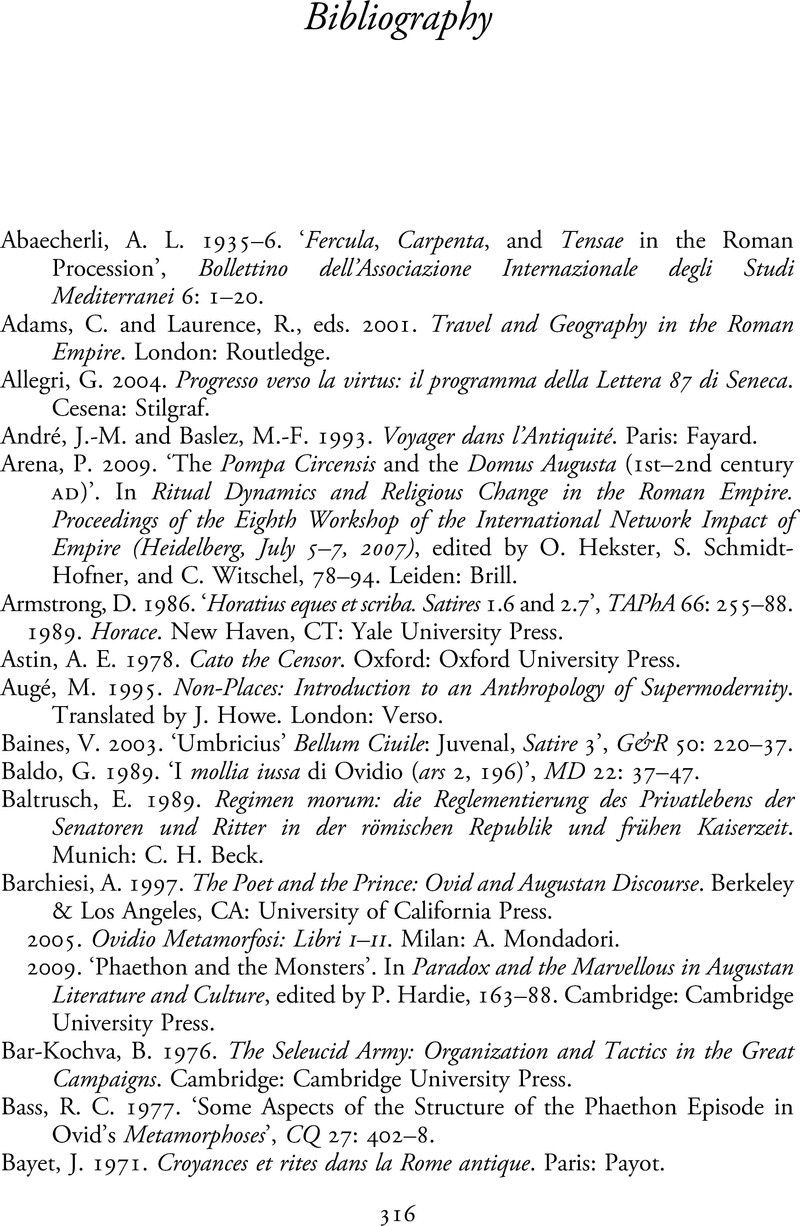Book contents
- The Rhetoric of Roman Transportation
- The Rhetoric of Roman Transportation
- Copyright page
- Epigraph
- Contents
- Acknowledgments
- Preamble
- Introduction En Route
- Chapter 1 Making Use: Plaustrum
- Chapter 2 Power Steering: Currus
- Chapter 3 The Other Chariot: Essedum
- Chapter 4 Conveying Women: Carpentum
- Chapter 5 Portable Retreats: Lectica
- Envoi
- Bibliography
- Index Locorum
- Subject Index
- References
Bibliography
Published online by Cambridge University Press: 20 January 2021
- The Rhetoric of Roman Transportation
- The Rhetoric of Roman Transportation
- Copyright page
- Epigraph
- Contents
- Acknowledgments
- Preamble
- Introduction En Route
- Chapter 1 Making Use: Plaustrum
- Chapter 2 Power Steering: Currus
- Chapter 3 The Other Chariot: Essedum
- Chapter 4 Conveying Women: Carpentum
- Chapter 5 Portable Retreats: Lectica
- Envoi
- Bibliography
- Index Locorum
- Subject Index
- References
Summary

- Type
- Chapter
- Information
- The Rhetoric of Roman TransportationVehicles in Latin Literature, pp. 316 - 328Publisher: Cambridge University PressPrint publication year: 2021

